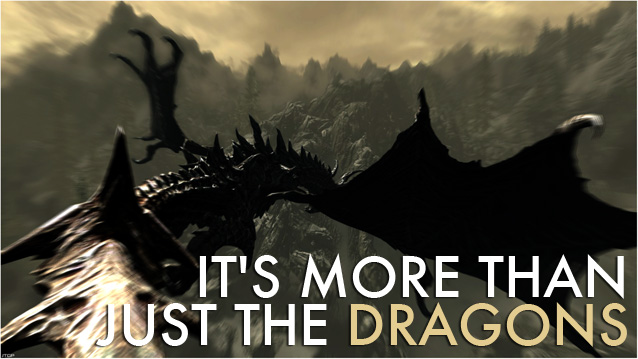

Game Rant’s Andrew Dyce reviews SSX
In this generation of gaming, so-called ‘reboots’ or spiritual successors and re-imaginings are certainly common, with a wide range of successes and failures. While large franchises and serialized shooters have improved upon an established formula one release at a time (to massive financial success), the once-beloved snowboarding genre has sadly been relegated to a supporting role. That’s all set to change with the release of SSX, one of if not the most revered names in snowboarding gaming to date.
With nearly half a dozen previous releases, the established over-the-top formula of SSX is well known and loved by existing fans, but this generation of consoles has sadly been without a release of its own. That’s all changed, with EA Sports claiming this technically-superior boarder shows what’s been learned in the franchise’s sabbatical. But does SSX manage to prove this series is one that still has something to offer to the world of sports gaming, or further proof that snowboarding titles should be laid to rest?
We’ll put it this way: if fans of SSX are hoping that the full potential of current consoles is used to bring a larger, more open-ended snowboarding experience in stunning environments – while still maintaining the insanity and attitude the series is known for – then this game absolutely delivers.
With a fantastic soundtrack, intuitive controls, streamlined and unobtrusive interface, and mechanics and environments that never stutter or show their seams, this SSX is without a doubt the most refined and promising snowboarding game we’ve seen yet. Whether this generation of console technology and its online accessibility would be completely used to enrich the SSX experience or not was one of our largest questions concerning the game, and EA Sports certainly didn’t disappoint.
Upon seeing the amount of technology and time being put in to mapping the world’s great mountain ranges when the game was shown at E3 2011, our expectations were understandably raised. The Mountain Man technology that was said to lie at the base of every one of the game’s ‘Massive World’ of environments was intimidating to say the least, and a sign that simulation and realism may have been favored over SSX‘s previous insanity.
We’re happy to say that in the end, nothing could be farther from the truth. The game is as ‘Tricky’ as it ever was, and the recently released playable demo showed that the core gameplay and tricking systems would be immediately familiar to fans of previous boarding or skate titles. While the four-button trick system and twin sticks may not offer the most expansive range of abilities, the game’s progression through a variety of challenges and intensely satisfying moment-to-moment tricking keeps the experience from ever becoming stale.
From the first moment the ‘Tricky’ mode is activated as a reward for successful combinations – and ‘Super Tricky’ brings the screen and soundscape to life with terrain deformation, dubstepping and glowing limbs – there is simply no resisting the addiction. Seeing a combo value increase is nothing new to score-based games, but the variety of in-game flourishes and direct feedback set SSX apart. Simply put: when a player is achieving an exceptional run, they know it. As far as pursuing high scores or refining racing lines go, it’s hard to think of a more effective motivation.
In a somewhat unexpected turn, the game’s conceit of throwing players up against the most dangerous elements of snowboarding is a complete success. The notion of building the game around a selection of ‘Deadly Descents’ (Trees, Thin Air, Rock, Avalanche, Gravity, Ice, Darkness, Cold, Whiteout) may have instilled doubts in the gaming community at large with SSX’s announcement trailer, but we may have spoken too soon. Each challenge demands that unique equipment be used effectively and upgraded as players see fit but, more importantly, each step adds another core mechanic to be learned, mastered, and exploited.
Whether it’s ice axes to gain traction down solid ice runs, or a limited oxygen tank that adds a new sense of urgency to high altitude descents, each challenge is refreshing and distinctly well-realized. While the ‘Survive Travis Rice’s World’ trailer may have seemed like a remnant from ‘Deadly Descents’ more dark and brooding origins, the more life-threatening challenges of the game actually do manage to mix terror with adrenaline to form one intoxicating mash-up.
All dubstepping and glowing snowboard equipment aside, one of our biggest questions was how the technology of the Xbox 360 and PS3 would be used to round out well-established core mechanics. The most apparent benefit is the sheer fidelity of SSX’s varied environments, which may go unnoticed behind the over-the-top tricks and wingsuits. But lest they be overlooked, the amount of polish, particle effects and overall showcase of snow physics deserves particular accolades (Patagonia in particular). Saddling a physics engine with snow, blizzards, ice, clouds, flight and, of course, snowboarding could be a recipe for disaster, but every moment of the game is testament to the horsepower under the hood.
SSX isn’t perfect of course, since the massive online tournaments and RiderNet leaderboards have made old-school splitscreen multiplayer a thing of the past. Similarly, players will only have the chance to compete against the pre-recorded ghosts of their best friends’ prime runs, as opposed to actually racing head-to-head. The lack of real-time matchmaking is certainly something that will be missed, but when weighed against the persistent challenges and Global Events, it’s hard to say that EA made the wrong decision. Since the average run clocks in around the two-minute mark, group play rotations are more likely to be accompanied by cheering than boredom or impatience.
The only real complaint that can be leveled against SSX would be that it is completely lacking a sense of real simulation – a fact fairly obvious given the presence of red metal pipes to nowhere and an abundance of pyrotechnics. While a sense of realism was clearly not a priority for the developers, the skill with which the environments, weather and physics are handled forces us to ask: why wasn’t it? The game doesn’t suffer as a result, but it’s hard to believe that the team couldn’t have come up with a rewarding way of integrated a bit more reality into this extreme sports fantasy.
That being said, SSX manages to accomplish the daunting task of challenging players at nearly every turn, but making the learning process satisfying enough to entice – not force – commitment and repetition. Since each mountain run is open-ended instead of linear, no two runs will ever be the same, nor will they ever cease to be a treat for the senses. With constant reminders of friendly challenges and the potential for DLC mountain ranges, the replay value isn’t in question for fans of SSX‘s basic gameplay.
For fans of SSX this new reboot shows that the series has taken a massive step forward, and newcomers will only need a brief glimpse of the game’s mix of neon and ice to decide if it’s their own brand of extreme sports. Personal preferences aside SSX confirms that the snowboarding genre cannot and should not be forgotten, and will almost certainly rank among 2012’s best offerings.
SSX is available now for the Xbox 360 and PlayStation 3. Game Rant played the Xbox 360 version for this review.
Follow me on Twitter @andrew_dyce.




 Fallout 4: Tour of Duty walkthrough
Fallout 4: Tour of Duty walkthrough Trans-Galactic Tournament Wiki – Everything you need to know about the game .
Trans-Galactic Tournament Wiki – Everything you need to know about the game . Training Camp Escape Walkthrough
Training Camp Escape Walkthrough Splatoon (Wii U) hands-on experience
Splatoon (Wii U) hands-on experience Destiny The Dark Below Guide: 5 Starter Tips
Destiny The Dark Below Guide: 5 Starter Tips